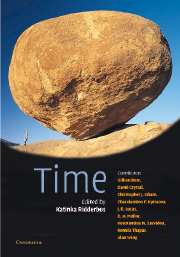5 - The Timing of Action
Published online by Cambridge University Press: 21 October 2009
Summary
Prediction and timing in motor skills
An impressive skill is that of the waiter who brings a tray of glasses full to the brim to your table and sets the glasses down, one by one, without spilling a drop – either from the one that he is lifting or from the ones that remain on the tray. Since one hand is placing each glass, he has only one hand free to balance the tray. Though it starts evenly loaded, as he takes each glass it necessarily upsets the balance, which requires corrective action if the tray is not to tilt and cause spillage. But note the problem: correction on the basis of sensory feedback takes time due to perceptual and motor delays – say one to two hundred milliseconds to process visual input and a similar further amount of time to select and implement appropriate corrective action – and requires attention. Yet the waiter's attention is probably fixed on determining who is to receive the glass and he does not have time (nor would it look so impressive) to check and correct the disturbance to equilibrium caused by removing the glass. The solution to this problem lies in prediction. If the waiter can anticipate the effect of removing the glass he can implement simultaneous correction.
Predictive adjustment of arm position was demonstrated in an experiment in which each volunteer participant (‘subject’) was blindfolded, while using one hand to support a weight.
- Type
- Chapter
- Information
- Time , pp. 85 - 104Publisher: Cambridge University PressPrint publication year: 2002



